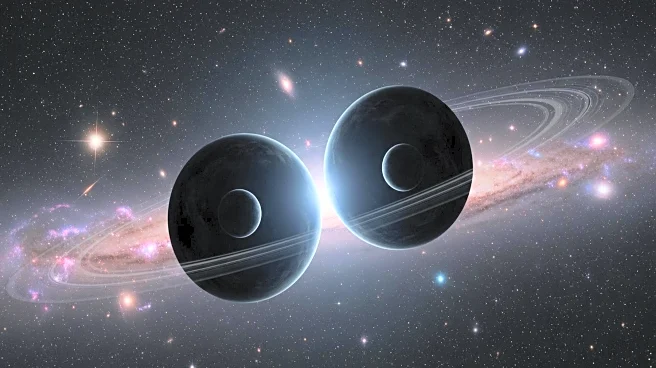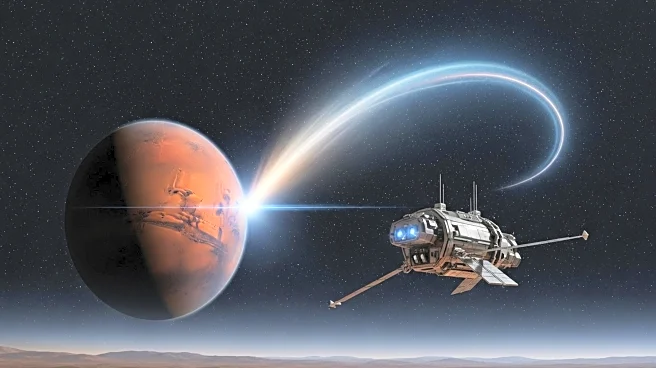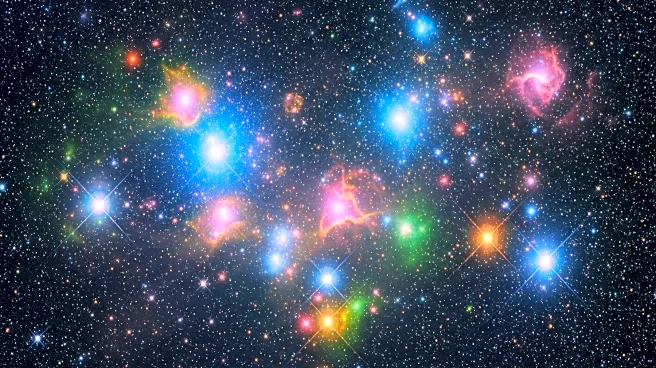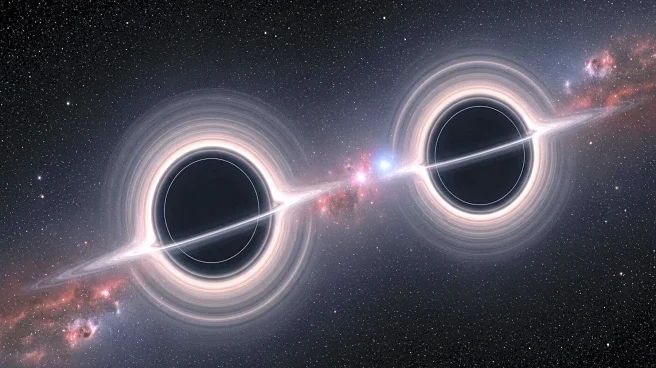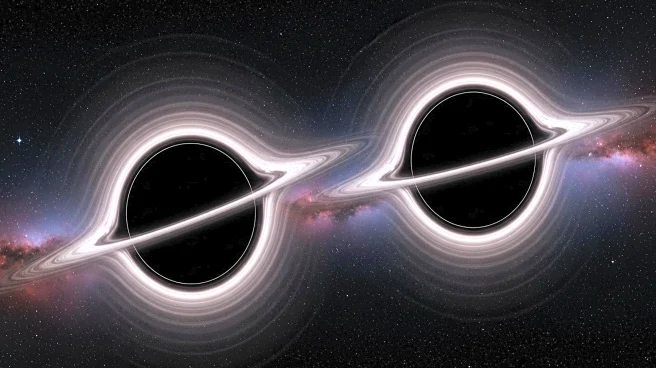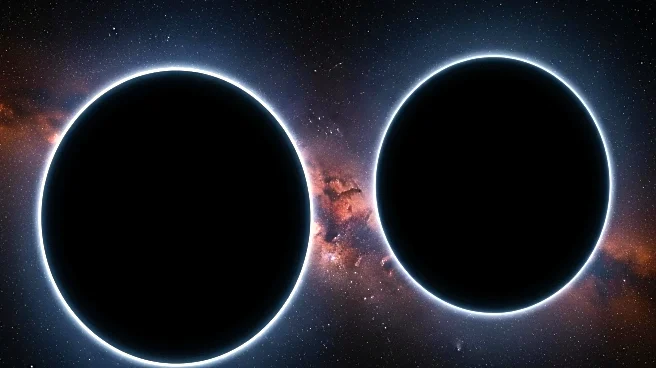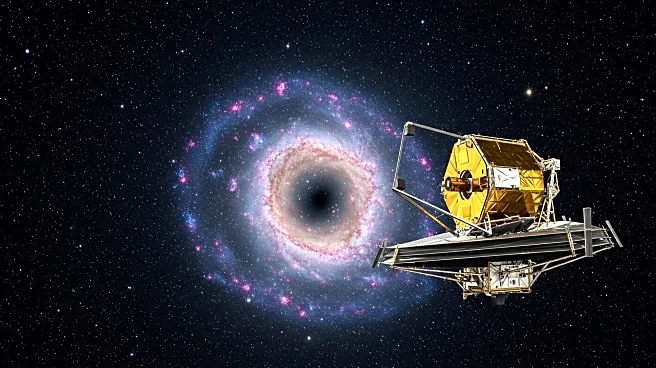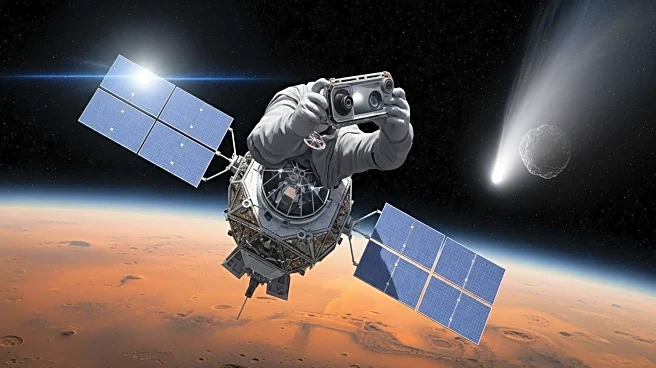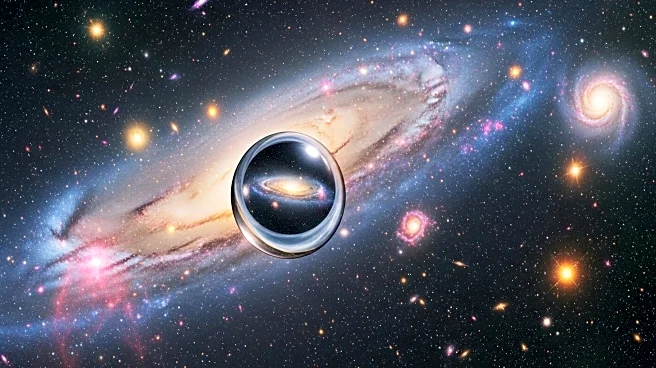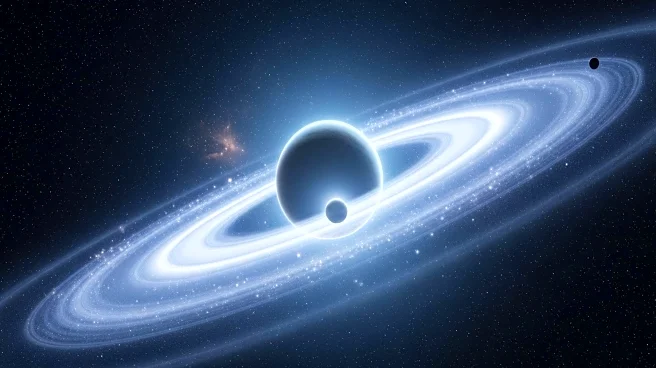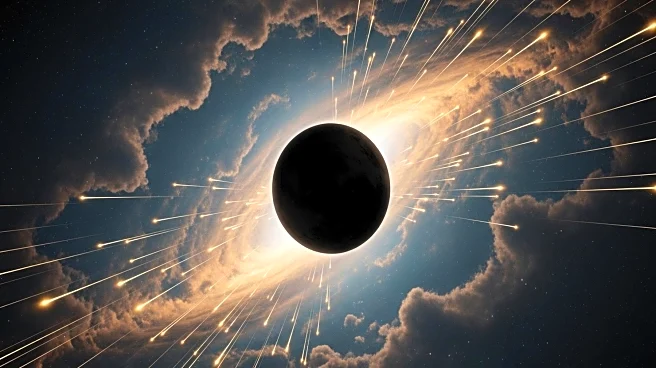What is the story about?
What's Happening?
For the first time, astronomers have captured a radio image of two black holes orbiting each other at the center of a quasar called OJ287. This observation confirms the existence of black hole pairs, which were previously only theorized. The quasar, known for its brightness, has been monitored for its light variations, suggesting the presence of two black holes in a 12-year orbit. The image was captured using a radio telescope system that included the RadioAstron satellite, providing high-resolution data.
Why It's Important?
This discovery is crucial for understanding the dynamics of black holes and their interactions. It provides direct evidence of black hole pairs, which can offer insights into gravitational waves and the behavior of matter in extreme conditions. The ability to image such pairs opens new avenues for studying the formation and evolution of galaxies and the role of black holes in these processes.
What's Next?
Researchers plan to continue monitoring the quasar to observe changes in the black holes' motion and the associated jets. This ongoing study could reveal more about the gravitational interactions between black holes and their impact on surrounding matter. The findings may also contribute to refining models of black hole behavior and their influence on galactic structures.
Beyond the Headlines
The discovery highlights the advancements in radio astronomy and the importance of international collaboration in capturing high-resolution images of distant cosmic phenomena. It also underscores the potential for future discoveries in understanding the universe's most enigmatic objects.
AI Generated Content
Do you find this article useful?
